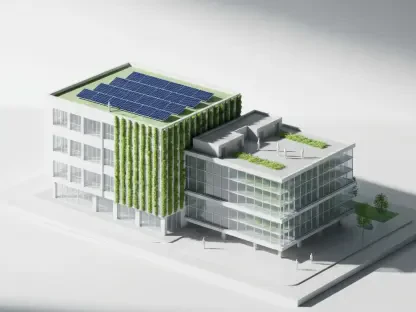The ever-changing skyline of London reflects architectural prowess and future aspirations while simultaneously posing significant sustainability challenges. As cities globally intensify their focus on green practices, London’s construction industry is at a crucial juncture between advancing environmentally responsible methods or lagging behind. This analysis sheds light on current market dynamics within London’s construction sector, assessing whether the industry is adopting sustainable models or missing vital ecological opportunities.
Navigating London’s Skyline Transformation: Green Potential Versus Historical Architecture
London’s architectural evolution has been ongoing for decades, marked by landmark developments from post-war reconstruction to contemporary skyscrapers. These different eras laid the groundwork for existing construction methodologies, highlighting historical architectural innovations alongside underlying environmental concerns. Present-day London is in a position to redefine construction paradigms, balancing rapid urban growth with eco-conscious practices.
Market Insights: Recycling and Reuse as Green Solutions
Unlocking the Possibilities of Demolition Materials
Recent demolitions, such as St Helen’s Tower, present substantial opportunities in repurposing construction materials. Approximately 49,000 tonnes of concrete aggregate have the potential to serve as a carbon sink, storing up to 490 tonnes of CO₂. However, regulatory constraints impede the optimal use of these resources. Addressing these hurdles could enable London’s construction sector to embrace recycling practices and contribute significantly to carbon emission reductions.
Comparative Analysis of European Green Construction Models
The UK’s regulatory landscape is notably stringent compared to other European nations like Switzerland and France, where recycled concrete aggregate (RCA) use surpasses British practices. These countries demonstrate that more lenient regulations can facilitate greater sustainability advances. Exploring these international approaches presents London with an array of lessons that could potentially be integrated into local construction processes, reducing ecological impact and fostering innovation.
Exemplary Projects and Sustainability Initiatives Abroad
In Europe, projects like the Bellis near Zurich highlight the benefits of employing RCA for CO2 sequestration purposes. Such initiatives exemplify sustainable architecture and offer London ideas on implementing RCA creatively and effectively. Lessons from these endeavors can inform industry strategies, dispelling myths surrounding RCA’s practicality in major developments.
Emerging Trends and Technological Innovations: A Look Ahead
Advancements such as carbon mineralization and sustainable supply chain enhancements promise a transformative impact on construction methodologies. These innovative approaches, along with potential legislative amendments, present an opportunity for London to spearhead global green construction efforts. Industry leaders could leverage these trends to drastically shift building practices toward eco-friendliness.
Strategic Actions for Industry Stakeholders
To capitalize on sustainable construction practices, stakeholders must commit to strategic actions. Promoting recycled materials, building robust local supply chains, and fostering legislative progress are vital measures to curb the environmental effects of construction endeavors. Effective implementation of these approaches may significantly elevate sustainability within London’s construction scene.
Conclusions and Implications for Future Directions
As London’s skyline continues to evolve, past architectural achievements juxtapose the ongoing effort to prioritize sustainable construction. This analysis underscores the need for industry-wide innovation aligned with regulatory adjustments to establish London as an exemplar in global sustainable construction. The journey toward a greener skyline requires informed and proactive engagement from construction professionals, policymakers, and municipal leaders. Industry adaptation entails substantial opportunities to achieve ecological progression and sustainably redefine London’s urban landscape.









